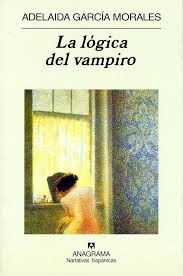
Idioma original: castellano
Year of publication: 1990
Valuation: Recommendable
A woman (who we will learn fairly near the end is called Elvira) receives a letter informing him that his brother has died. He then travels from Madrid to Seville, where the deceased lived, and contacts his circle of friends to find out what has happened. He meets there with Maraoccasional lover of the deceased, with Pabloa friend whose relationship is not clear whether it is still valid, and with a certain Alfonso, apparently a more recent friendship and with a strong influence on everyone around him. It is not entirely clear whether the death has really occurred, or whether it is a misunderstanding, or an exaggerated suspicion. Our protagonist tries to obtain information from that circle, barely carrying mistrust and uncertainty, unable to escape a certain feeling of guilt (why she did not maintain a closer relationship, how she could have helped), and absorbed by the strange atmosphere that seems to dominate the group.
But this, although it may seem like it, is not a thriller at all, there is hardly any action, no investigations or very surprising discoveries, it is rather the landing in a world of completely normal appearance through which something indeterminate, dissonant, however, circulates. what the woman cannot find an explanation for. They are perhaps small details, disconcerting moments that she does not know how to interpret or that she perhaps understands in the wrong way, altered by sadness and anxiety.
It will be seen that the reviewer is making a considerable effort not to give more information that could lead to spoilers, it is a relatively short story in which any extra comment can ruin the reading, or that’s how I see it. Because what is really important is precisely that environment that we know (or assume) has something unhealthy, populated by characters that are never fully defined, who offer profiles that seem contradictory and move on parameters that are continually questioned. Not only the main ones that I mentioned at the beginning, also Teresathe mysterious and somewhat harsh woman of Alfonso, or the young girl welcomed into her home, who plays the piano terribly. They seem like hollowed-out individuals, with a point of imbalance that always catches the reader off guard, extremely well drawn in their own inconsistency, like a blurred portrait.
In some way there is a struggle between the author and the reader. The latter, bewildered and tense, is longing for something decisive to happen, he needs a twist, a blow that speeds up the narrative and takes him out of his discomfort, for better or worse. But García Morales does not play at that, he continues to stir that broth of indefinition and despairs us a little more, to the point where one could criticize a certain lack of verve, of daring to pour the story into a specific place. I don’t know if this wandering from one space to another, all already seen, is or not an effect intended to make the reader participate in the anxiety, but it is the consequence that is obtained. You have to be able to enjoy those strange moods, to revel in suspicion and even to feel a little bad because of the lack of certainties or for fearing that we will never have them. Because that is how the author wants to tell us, and surely they are the sensations that she wants to make us experience, those and no others.
Source: https://unlibroaldia.blogspot.com/2024/06/adelaida-garcia-morales-la-logica-del.html


